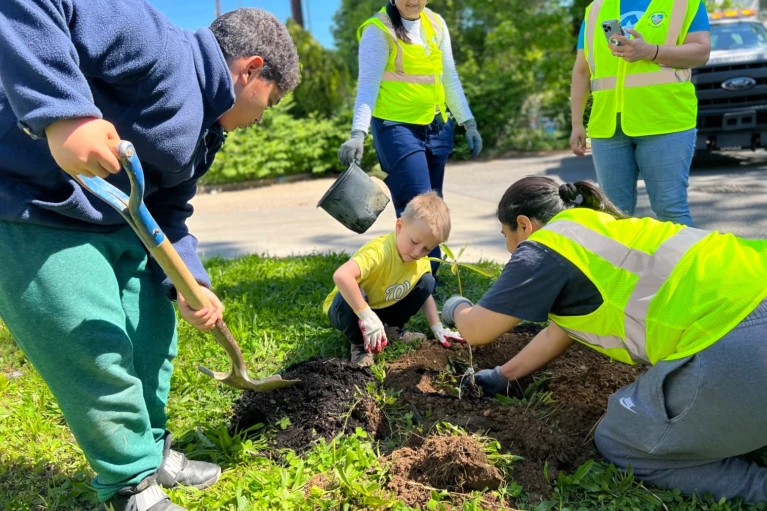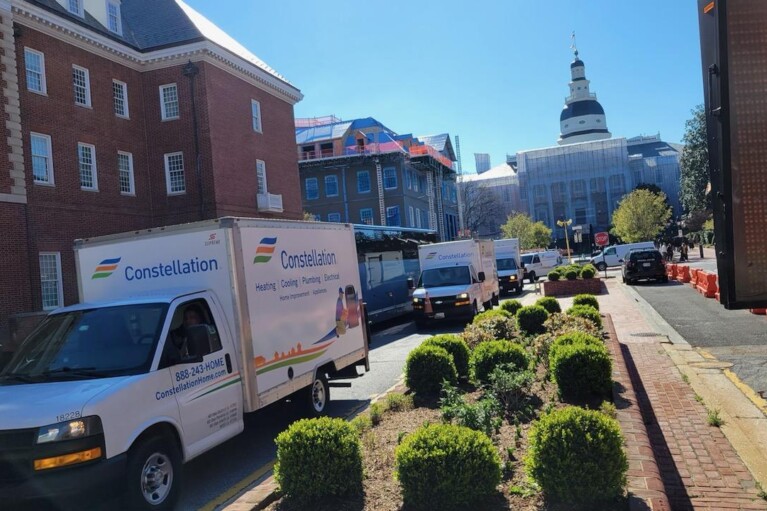Maryland’s top invasive plant species import harm to natives

By Dorothy Hood
Invasive plant species are damaging Maryland’s environment. From bamboo to bushes, invasives, environmentalists say, have wrapped their tendrils all across Maryland.
The United States Department of Agriculture defines invasive plants as non-native or alien to the ecosystem under consideration and whose introduction can cause economic or environmental harm or adversely affect human health.
Invasive plants have unfair advantages over native plants, especially in human-disturbed habitats, said the University of Maryland Extension. They reproduce aggressively in multiple ways, and at a much faster pace than indigenous plants.
Some plants are so problematic that the state mandates that sellers label them as invasive. And in the case of a plant called “running bamboo,” Maryland’s General Assembly approved a bill, House Bill 90, to allow local governments to prevent it from being sold, planted or grown without proper upkeep and containment. The bill was signed by Gov. Wes Moore (D) earlier this month.
But there are plenty of other contenders for most-invasive plant species in Maryland. Here are five others that environmentalists have put on their hit list:
Bush Honeysuckle
The Maryland Invasive Species Council defines this invasive to be “upright, deciduous multi-stemmed shrubs that can grow up to 15 feet.” These plants have leaves that can appear to be hairy and usually emerge in the early spring, giving them an advantage over native honeysuckles that grow later in the season. The flowers on these invasives are “tubular, whitish-yellow or pink,” with blooms happening as early as March and as late as June.
Not only does the invader compete with native plants for space, sun and soil, but it can affect the songbird population because birds building nests in the weaker limbed, nonnative honeysuckles face more predation, the council said in an online article about the species.
According to Judy Fulton, founder of EcoPlant Consulting and specialist in invasive and native plants, all nonnative honeysuckles are a problem. These invasives, according to the council, reproduce almost entirely by seeds, creating a high germination rate and adaptability, which makes them hard to control.
Small infestations can be removed by hand because of their shallow root system, according to the Extension. Collect all the seeds around the bush to prevent further spread. Larger infestations require a combination of cutting down the plant and herbicides.
English Ivy
Christa Carignan, the coordinator of digital horticulture education at the Maryland Extension Home and Garden Information Center said English ivy is an invasive that started in the horticulture trade as a ground cover plant.
When not controlled, Carignan said the ivy can twine around trunks and limbs and completely cover canopy trees, blocking out the foliage, which is a threat to mature trees.
“It serves as a reservoir for bacterial leaf scorch, a serious disease of trees…Any rooted piece can resprout,” according to the Home and Garden page about invasive plants.
The leaves of English ivy are waxy, which repels herbicides, so a spray must be applied in high concentrations and with a spreader sticker, which is a chemical that helps an herbicide spread and penetrate. “It’s important to cut the ivy if it starts climbing a tree,” Fulton said. It should be cut at the root and never pulled down from a tree because it could damage it, she said.
Japanese Barberry
This is a “fine-leaved” invasive shrub according to the Extension, growing anywhere from two-to-eight-feet high. The yellow flowers bloom between April and May, producing “bright red berries” in the later summer.
“Japanese barberry is a terrible plant,” said Fulton. “It is one of the most commonly planted invasive plants.”
The Extension sees a lot of this species in Western Maryland, invading agricultural areas. “The Maryland Department of Agriculture has named this a Tier 2 invasive plant. This classification means retail stores that offer this plant for sale must display a required sign indicating that it is an invasive plant,” according to the Extension website.
The seeds of this plant are spread through birds and small mammals, where a single shrub can produce a “dense impenetrable mass,” according to the Extension. It also tolerates a wide range of conditions, surviving in both shaded and sunny areas.
Japanese Knotweed
This perennial can grow up to 10 feet high, with small green-white flowers and greenish triangular fruits, according to the Extension. This invasive species is particularly seen around waterways, according to Ashley Bachtel-Bodkins, the Master Gardener coordinator and home horticultural agent in Garrett County.
This invasive species, according to PennState Extension’s website, emerges in early spring with bright red or purple growths, with distinctly triangular, furled leaves. This invader’s success lies within its root system, where it can reproduce rapidly.
“Colonies of knotweed are usually formed from an interconnected, underground system of horizontal roots called “rhizomes.” These rhizomes are prone to splitting when disturbed and each fragment is capable of forming a fully functional clone of the parent plant,” said PennState Extension.
Maryland Extension recommends digging out the roots of these invasives as much as possible and destroying them.
Callery Pear
This tree can grow up to 40 feet, and is typically found along roads, right-of-ways and old fields where they have escaped from landscape planting, according to the Pennsylvania Department of Conservation and Natural Resources.
Callery pear is native to Asia and was brought to Maryland in 1918. Originally planted throughout the suburbs, “it was thought that they were sterile,” said Rob Schnabel, a restoration biologist for the Chesapeake Bay Foundation, who works with landowners statewide. Since then it’s been, “a nonstop battle.”
The bark of the tree is scaly and brown, producing white flowers in the spring. The seeds are spread by birds according to Schnabel. To get rid of the tree you need to cut it down, then immediately apply a herbicide to the cut stump, according to Pennsylvania’s DCNR.
***
While these species are harmful and difficult to eradicate, not all introduced species are harmful.
“Native plants are especially beneficial to the environment and are key, but not all non-natives are bad. We have plenty of good non-natives,” said Fulton.
And even native plants can be the wrong thing at the wrong time:
According to Allentuck Landscaping Co. “May is like the Super Bowl of flowering plants,” which means a perfect time to plant native species.
The Extension recommends a variety of native plants to add to your lawn this spring – from groundcovers to wildflowers, trees and shrubs, each are beneficial to Maryland’s ecosystem.
The black-eyed Susan is a great native plant and Maryland’s state flower, according to the Extension, that attracts a particularly wide range of pollinating insects including flies, beetles and small butterflies.




 Creative Commons Attribution
Creative Commons Attribution